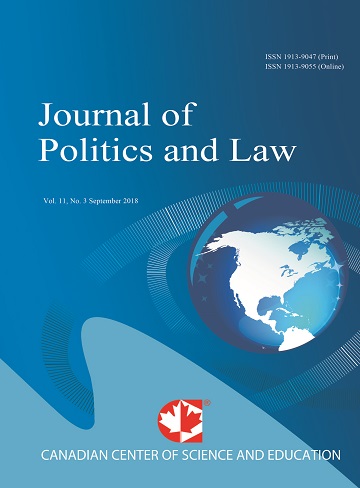The Expansion of China’s Exclusive Jurisdiction in International Civil Procedure: Legal Transplant or False Analogies?
- Yun-cheng Zhao
- Qin-xuan Peng
Abstract
This paper explores the exclusive jurisdiction rule in Article 279 of the Civil Procedure Law (CPL) 2023 of the People's Republic of China (PRC), which introduces two newly covered types of disputes: those involving the establishment, dissolution, liquidation, and validity of resolutions of legal persons or other organizations, and those concerning the validity of intellectual property rights (IPRs). Through a comparative analysis with Article 24 of Brussels I Recast 2012, the study highlights key differences—the Chinese exclusive jurisdiction rule for legal persons or other organizations adopts a hybrid approach combining enumeration and generalization, while Brussels 2012 follows a strictly enumerative method. In addition, the exclusive jurisdiction rule for IPRs adopts the broad term “Intellectual Property” instead of specifying categories like patents or trademarks, as seen in Brussels 2012, and restricts its application to disputes over the validity of intellectual property, explicitly excluding registration disputes. An analysis of nine rulings from 2024 shows that Chinese courts strictly adhere to the scope of this exclusive jurisdiction rule. However, challenges remain in accurately identifying foreign elements and consistently citing Article 279. The findings suggest that China’s two new categories of exclusive jurisdiction in international civil procedure are legal transplants rather than flawed analogies. Consequently, concerns that the expansion of China’s exclusive jurisdiction is unfriendly to foreign companies or parties may be overstated. The article concludes with two recommendations: (1) Chinese courts should enhance their identification of foreign elements in cases before applying the exclusive jurisdiction rule; and (2) Chinese courts should explicitly clarify their obligation to apply the exclusive jurisdiction rule in judicial reasoning and cite Article 279 in the judgment’s result section.
- Full Text:
 PDF
PDF
- DOI:10.5539/jpl.v18n2p47
Journal Metrics
h-index (2017): 14
i10-index (2017): 39
h5-index (2017): 9
h5-median (2017): 11
Index
- Academic Journals Database
- ACNP
- ANVUR (Italian National Agency for the Evaluation of Universities and Research Institutes)
- Berkeley Library
- CNKI Scholar
- COPAC
- CrossRef
- DTU Library
- EBSCOhost
- Elektronische Zeitschriftenbibliothek (EZB)
- EuroPub Database
- Excellence in Research for Australia (ERA)
- Genamics JournalSeek
- GETIT@YALE (Yale University Library)
- Ghent University Library
- Google Scholar
- Harvard Library
- HeinOnline
- INDEX ISLAMICUS
- Infotrieve
- Jisc Library Hub Discover
- JournalGuide
- JournalTOCs
- LOCKSS
- MIAR
- Mir@bel
- NewJour
- Norwegian Centre for Research Data (NSD)
- Open J-Gate
- PKP Open Archives Harvester
- Publons
- Pubmed journal list
- RePEc
- ROAD
- Scilit
- SHERPA/RoMEO
- Standard Periodical Directory
- Stanford Libraries
- UCR Library
- Ulrich's
- UniCat
- Universe Digital Library
- UoS Library
- WorldCat
- Zeitschriften Daten Bank (ZDB)
Contact
- William TaiEditorial Assistant
- jpl@ccsenet.org
